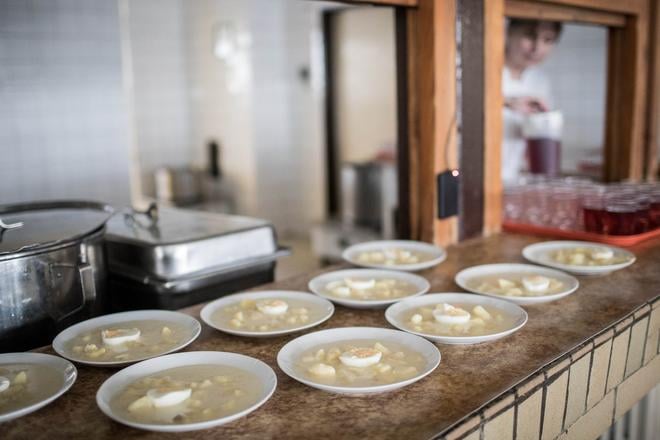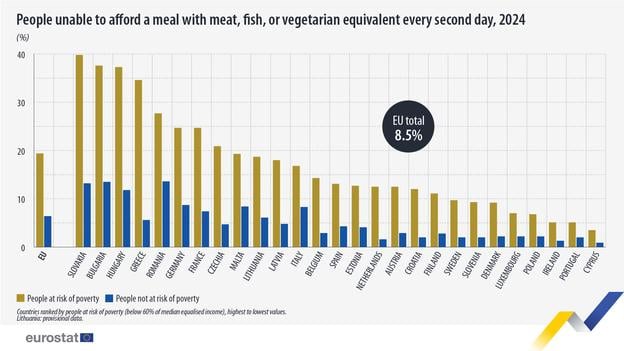The latest Eurostat survey shows that in 2024, an average of 8.5 percent of EU citizens could not afford a meal containing meat, fish, or a vegetarian equivalent every second day. The figure represents a one-percentage-point improvement compared to 2023.
This was significantly higher for people at risk of poverty: 19.4 percent.
Slovakia, however, has little reason to celebrate. With 39.8 percent of Slovaks at risk of poverty and almost 15 percent of people not at risk unable to afford such a meal, the country ranked at the very bottom among EU members. Access to quality food is a basic necessity that directly influences health, work capacity, and overall quality of life. Reliance on cheaper, highly processed food, by contrast, can contribute to serious health problems.
Other countries with similarly poor results include Bulgaria (37.7 percent) and Hungary (37.3 percent). At the opposite end of the scale, Cyprus recorded only 3.5 percent, while Ireland and Portugal both stood at 5.1 percent.
The sharp differences between countries highlight how the ability to afford a balanced diet is closely tied to income levels, the strength of social systems, and food prices.
According to the Pravda daily, approximately 400,000 Slovaks cannot afford a decent meal every other day. One of the main reasons Slovakia fares worst in the EU is the low income of households. While the average wage has risen in recent years, it remains far below the EU average, whereas food prices are approaching western European levels.
The problem has been compounded by high inflation in 2022–2023, which pushed food prices up more steeply in Slovakia than in most other countries.




